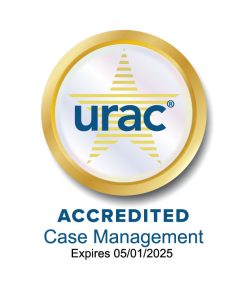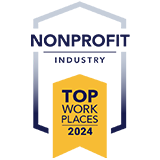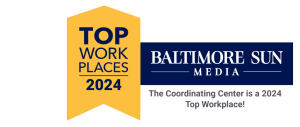By: Renée Dain, SVP, Strategic Partnerships and Sherell Townes, Program Director, Coordination of Community Services for DDA
October this year holds special significance, as it commemorates the 50th anniversary of the Rehabilitation Act of 1973 and National Disability Employment Awareness Month (NDEAM), which aims to raise awareness about disability employment issues and promote the inclusion of individuals with disabilities in the workforce. The Rehabilitation Act of 1973 was the first federal legislation to address access and equity for people with disabilities. which served as the foundation for the subsequent enactment of the Americans with Disabilities Act of 1990. The history of NDEAM traces back to 1945, when it started as a week and focused only on people with physical disabilities. Later, it expanded to a full month, and its name and scope evolved to acknowledge the importance of increasing the workforce inclusion of people with all nature of disabilities.
In observance of NDEAM and in tribute to the 50th anniversary of the Rehabilitation Act, the U.S. Department of Labor’s Office of Disability Employment Policy has chosen the theme “Advancing Access and Equity: Then, Now, and Next” to both champion NDEAM and honor this important milestone. This annual observance is a vital opportunity to recognize the value and potential of individuals with disabilities in the workforce. It’s a time to celebrate their achievements and renew our commitment to fostering inclusive workplaces. In this blog post, we will explore with Sherell Townes, Director of the Coordination of Community Services Program, the significance of NDEAM and how Coordinators of Community Services play a pivotal role in supporting disability employment.
 What are some of the obstacles that individuals with disabilities face with accessing employment?
What are some of the obstacles that individuals with disabilities face with accessing employment?
Although there are resources to support individuals in their pursuit of employment, individuals living with disabilities often encounter formidable obstacles preventing them from achieving their desired opportunities. Oftentimes, opportunities are turned down due to the inhospitable nature of the workplace environment. This can include inaccessible office buildings, restrooms, or workstations, making it difficult or impossible for people with mobility impairments to navigate the workspace. Businesses may not be equipped with assistive devices and technologies that would aid in the person’s ability to be effective in their position.
Beyond the physical realm, there exists a social dimension to the problem, which can be challenging to address due to employers’ inadequate or lax enforcement of policies regarding inclusivity. Discrimination and biases can create social barriers for individuals with disabilities. Employers may have preconceived notions about their capabilities or be unwilling to provide necessary support and accommodations. Some policies and regulations inadvertently create employment barriers for disabled individuals. For example, disability benefits can dissuade some from seeking employment out of fear of losing those benefits. Additionally, current policies often fail to account for individuals requiring highly specialized work accommodations.
For individuals with communication disabilities, such as speech or hearing impairments, there may be challenges in effectively conveying information during job interviews or while performing job tasks. Not all workplaces are equipped with Braille materials or tools, such as Braille signage, documents, or equipment with Braille labels. This lack of accessibility can create significant barriers for individuals who rely on Braille for reading and communication.
Overcoming these obstacles requires a concerted effort from employers, policymakers, and society to promote inclusivity, awareness, and accessibility in the workplace. Legal protections, reasonable accommodations, and initiatives that support diversity and inclusion can all contribute to improving the employment prospects for individuals with disabilities.
What are the benefits of promoting disability inclusion in the workplace?
The benefits of strong inclusion policies and practices in the workplace create a culture that is supportive and welcoming to all differences. It minimizes stigmas and draws awareness to biases that would otherwise make it difficult for individuals, such as those with visible and non-visible disabilities, to flourish. There are millions of individuals with disabilities who desire to be fully integrated in the workforce and by promoting disability inclusion policies and practices, individuals will have equal opportunities for employment, advancement and will be compensated fairly. Efficient inclusion practices provide individuals with greater job satisfaction as they can fully immerse themselves in the work culture. Policies would therefore be structured in a way that accommodates those who require a greater level of support to be successful in their position. This would directly impact retention as individuals would be better able to keep up with the ongoing requirements, training, and their increasing responsibilities.
How do Coordinators of Community Services support disability employment?
Coordinators of Community Services support the philosophy of Employment First, a concept that is driven by the Maryland Developmental Disabilities Administration (DDA) to facilitate the full inclusion of people with the most significant disabilities in the workplace and community. Under the Employment First approach, community-based, integrated employment is the first option for employment services for youth and adults with significant disabilities. The guiding principle of Employment First is that all individuals who want to work can work and contribute to their community when given the opportunity, training, and support that build upon their unique talents, skills, and abilities.
Coordinators of Community Services (CCS) utilize person-centered planning tools such as Charting the Life Course and the Supports and Services Planning Tool, to assist individuals, and those that support them, develop a vision for their life, set goals and identify needed supports and services, including employment. The results from these tools become the framework for the development of the individual’s Person-Centered Plan (PCP). For identified services/goals, the CCS navigates resources that match the individual’s needs. Once the connection is made between the provider and the client, the CCS provides ongoing emotional support, monitoring of services and continued assessment of the individual’s needs, wants and desires.
When employment is identified as a goal, the CCS connects the individual to employment providers funded by the DDA and helps facilitate access to other providers, such as the Maryland State Department of Education – Division of Rehabilitation Services (DORS). The mission of DORS is to provide leadership and support in promoting the employment, economic self-sufficiency, and independence of individuals with disabilities. DORS provides personalized support and employment services to eligible job seekers with disabilities.
What are some resources (organizations, programs, tools) that can help individuals with disabilities find employment?
DDA partners with over 200 providers/vendors that help with finding employment for individuals with disabilities. These providers are accessible by clicking HERE for Maryland’s Provider Search.
The Maryland State Department of Education – Division of Rehabilitation Services (DORS) helps people with physical, emotional, intellectual, developmental, sensory and learning disabilities go to work and keep their jobs by providing services such as career assessment and counseling, assistive technology, job training, higher education and job placement. To locate the closest DORS office, CLICK HERE. You can also learn more to see if DORS is right for you by clicking HERE.
The Maryland Department of Disabilities has comprised a job seeker fact sheet library, which answers common questions and concerns about employment and disability. Click HERE to access the library.
What is the Employed Individuals with Disabilities Program (EID)?
Access to healthcare and health insurance is critical for many individuals with disabilities. The cost of healthcare and concerns about losing coverage can be significant barriers to seeking and maintaining employment. The Employed Individuals with Disabilities Program (EID) Program, administered by the Maryland Department of Health (MDH), provides Medical Assistance (also called Medicaid) to working Marylanders with disabilities who meet a few conditions. For the most up to date information however on the Employed Individuals with Disabilities Program (EID) click HERE.
Tell us a little bit about yourself and your position at The Coordinating Center?
As Program Director for the CCS Program, I am responsible for program development and execution, quality oversight, training, and compliance. I work closely with the DDA in Central, Eastern, and Southern Maryland and the DDA’s regional office, to ensure the individuals we serve, and their families have access to critical resources and Medicaid Waiver services that encourage self-sufficiency, health and safety and real community participation. I have been with The Coordinating Center for 10 years and bring extensive experience in behavioral health and home and community-based services. I’ve served as a Crisis Counselor, Mental Health Counselor, Care Manager and Supports Planner, helping people with behavioral and mental health conditions, complex medical needs and those with intellectual and developmental disabilities achieve their aspirations for a meaningful life.
Conclusion
National Disability Employment Awareness Month (NDEAM) serves as a reminder of the progress we’ve made in promoting disability inclusion in the workforce and the work that still lies ahead. Coordinators of Community Services are instrumental in this journey, providing essential guidance and support to individuals with disabilities as they pursue meaningful employment.





